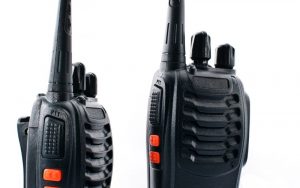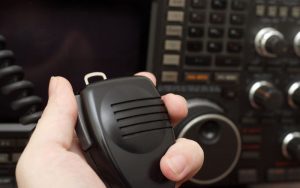If you’re new to ham radio, one of the first things you’ll need to figure out is what kind of antenna you need. There are many different types available, and each has its own advantages and disadvantages.
Having the right antenna is key to successful ham radio operations. But what kind of antenna do you need for ham radio? And how do you go about choosing the right one?
Ham Radio antennas can be simple or complex, depending on what you are trying to achieve. There are a variety of different types of antennas that can be used for Ham Radio, and the type you need will depend on your location, the bands you want to use, and the amount of money you want to spend.
Factors affecting your choice of antenna
Choosing the right antenna for your application depends on several factors such as:
1) What bands you wish to use
2) The available space in your yard
3) How much money you have to spend
4) How strong is the local radio noise level
The bands that you wish to operate on
Ham radio antennas are typically designed for a specific frequency range, and this is the primary factor in deciding which amateur band you want to use.
You may wish to choose an antenna that allows multiple bands so that you can operate on several different bands such as ten meters and sixty meters, or 160 meters and thirty meters, etc.
1) The HF Bands:
The HF Bands include the “Low Bands” and “High Bands”. The Low Bands include 160 meters, 80 meters, 40 meters, and 20 meters. The High bands include 30 meters and up.
There are several choices for antennas that can be used on the HF Bands such as dipoles, verticals, loops, and beams.
2) The VHF and UHF bands:
Most amateurs use antennas such as verticals, Yagis, and beams for VHF and UHF. Each of these bands has their own type of antenna that is suitable for the band.
3) The microwave bands:
Antennas used on microwaves typically consist of dishes or dish like parabolic shapes.
4) The Satellites:
There are several types of antennas used for working satellites depending on the type of satellite that you wish to use. Most commonly used types of antennas for working satellites include cross-polarized slot arrays, quads, and dishes.
When selecting ( or for that matter making ) an antenna it is important to remember that your antenna must be suitable for the frequencies that you intend to operate on.
Using an unsuitable antenna will give poor performance ( if it works at all ) and worse, it could result in damage to the RF amplifier on your radio.
Available space in the yard
The amount of available space in your yard will also play a role in determining which type of antenna to use.
Space is an issue for many operators and consequently most become creative in their choice of antenna.
End fed wire antennas can be strung across trees or poles or even pegged to the wall of the house and run around beneath the guttering.
Vertical antennas are also an option if you have the height available and a good, multi band vertical antenna, that I use is the SE HF-360 from Sigma Euro Comm.
This is a fiber glass antenna, that needs no radials ( thus saves lots of space ). The antenna height is 18 feet (5.5 meters) and comes with a built in transformer to enable tuning across the 80m to 6m bands.
It is a good, multiband choice and you can read more about it over on Amazon here.
How much money do you have to spend?
The amount of money you have to spend will also limit your options. A poor or cheap antenna is not the answer, but neither is an expensive one.
The solution is to find an antenna that has the best value for money and suits your application.
End fed antennas
Most amateur operators start out with simple ‘end fed’ antennas which are often just long pieces of wire thrown over tree branches or suspended from rooftops with a coaxial cable attached to one end.
These types of antennas can be surprisingly good and, if they are the correct length, then they can often be used across multiple bands.
Speaker wire is often a good choice although you can purchase purpose made end fed antennas with built in transformers to add the tuning.
Verticals
A vertical antenna is often the simplest solution for VHF and UHF, especially if you have limited space in your yard.
Verticals are so easy to install that can even be pegged into the ground or attached to a tripod, but most verticals typically require extensive radials (ground planes) which, if you’re short on space, makes these a challenge to install properly.
If you have the space then a quarter wave vertical with ground plane radials can be an excellent option to consider.
Yagi antennas
Yagi antennas are beam type antennas that operate on a directional basis, focussing the signal from the radio in a single direction.
For best performance they are pole mounted and often incorporate a motor based system that allows for the turning of the antenna ( so that it can be moved around to focus in different directions as needed).
Although they can be very effective, they are typically expensive and can be tricky to install properly.
Antenna tuners
An antenna tuner will come in handy if you need to cover a lot of bands with only a few antennas. This may be built into your radio or added as a separate box between the transmitter and antenna.
An antenna tuner does not, as the name implies, “tune your antenna.”
It will alter the SWR of the antenna and allow it to be utilized across a wider frequency spectrum.
It will also make sure that the impedance of the antenna meets that which your transmitter needs for best performance.
Many modern ham radio transceivers have built in antenna tuners and it is also possible to buy them separately for connection between the radio and the antenna.
Final Thoughts
Selecting the proper antenna is important and will directly influence your range and results.
Finding the best antenna for your application is a matter of choice and budget, but finding an antenna that delivers good results at a low cost has its rewards too.
If you are looking to purchase an antenna then make sure that it is suitable for your application, has the best value for money and offers good performance.
Read Next
- Can ham radio survive EMP?
- Why do you need a ham radio license?
- What is 2m ham radio?
- What’s better ham radio or CB radio?
- Is morse code still useful?
- What does QRP mean in ham radio?










